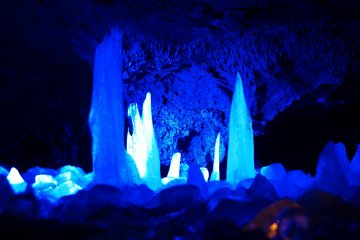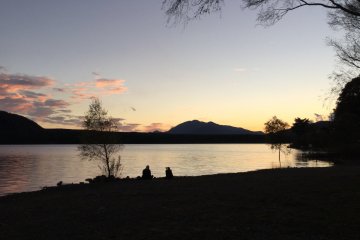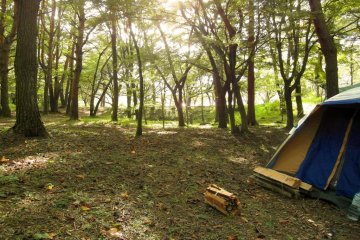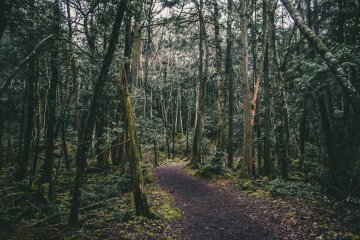
Beneath the Great Volcano
Reynald VenturaFujisan has been quietly keeping some kind of jewels --- there are tons of blocks of ice resting underneath the sleeping volcano. One place to find them is at the Narusawa Ice Cave (鳴沢氷穴).
The Narusawa Ice Cave is a lava tube located in the Aokigahara forest, in the part that belongs to Narusawa Village, Yamanashi Prefecture, Japan. It is one of the three larger lava tubes at the northern foot of Mount Fuji, the other two caves being Fugaku Wind Cave and Lake Sai Bat Cave. [Wikipedia]

Fujisan has been quietly keeping some kind of jewels --- there are tons of blocks of ice resting underneath the sleeping volcano. One place to find them is at the Narusawa Ice Cave (鳴沢氷穴).

Beat the summer heat by chilling out in Yamanashi's permanently frozen Narusawa Ice Cave.

Saiko or Lake Sai is one of the five lakes around Mt. Fuji and is within the borders of the Fuji-Hakone-Izu National Park. All guest rooms face the lake so no matter which room you are given, you will wake up to sweeping views of the Mt. Fuji, the surrounding mountains and the lake.

Finally, the quintessential North American-style campground with open, on-ground campfires; lots of trees; a beautiful lake and the fresh mountain air

An easy trip from Kawaguchiko Station, PICA Fujiyama's forest campsite is an easy and unique choice for those looking to rough it...but not too much. Gourmet meals, comfy beds, and a menu of activities that range from yoga and pilates to mountain biking and paddleboarding let each guest relax however they please.

Taking place over the same dates as the iconic Fuji Shibazakura Festival, the Mount Fuji Delicious food festa is a celebration of the culinary delights found in Yamanashi Prefecture.

In the foothills of Fuji, burgers fit for a King - or at least a Prime Minister.

Houtou is a popular dish in Japan originated from Yamanashi, and Houtou Fudou is a great place to try it.

The Aokigahara Forest is located to the north of Mount Fuji, which grew over the lava bedrock following the volcano's last major eruption in the 9th century. The dense forest is known as the "Sea of Trees" given the quiet and sparse territory found here. A number of caves, like the Narusawa Ice Cave and Fugaku Wind Cave, can also be found here.

This is an underground lava cave, in which the temperature pretty much stays around zero degrees throughout the whole year and it is therefore used for storage. While the official name of this particular cave is wind cave (fuketsu - 風穴), I would rather call it an ice cave. In any case it was fascinating, not too cold and there were stalagmites and stalactites everywhere, which you can touch or even lick them if you're close enough.

A few minutes after descending from the Fifth Station of Mt. Fuji Subaru Line, my friend and I came upon a fantastic view of Lake Kawaguchi and Lake Sai